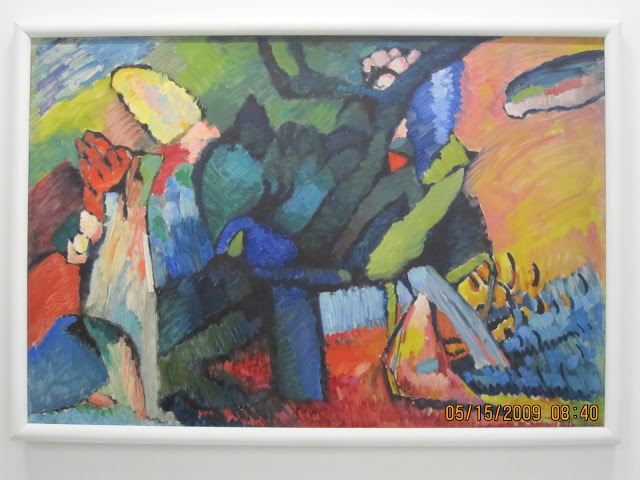
As a Chicagoan, I think I’m naturally inclined to favor the Bauhaus School. So, the Kandinsky exhibit at the Pompidou Center was a “must see” for me. In Chicago, we are fortunate to have numerous buildings influenced by the Bauhaus architectural style and as well as a good number designed by Mies Van der Rohe himself. Over the years, I’ve come to appreciate them for their boldness and beauty – looking up at these massive, often black, structures is quite a sight to see. I can’t imagine our lakefront without them. (See post 10-10-09.) That said, I’m less familiar with how Bauhaus idealogy influenced other art forms. The Kandinsky exhibition is arranged chronologically and displays more than 100 works, tracing the artist’s evolution from his early days in Munich to his final days in Paris and Neuilly-sur-Seine.
Kandinsky’s complex background and various stages of his life is revealed as the exhibit progresses. Interwoven with Kandinsky’s life history is general information about the Bauhaus School and events taking place in Germany at that time.
The Bauhaus School was closed by the Nazi government in 1933 for being too subversive. Bauhaus teachers and students, including Walter Gropius and Mies van der Rohe, fled Germany to pursue their craft elsewhere. Gropius ended up teaching at Harvard University while Mies Van der Rohe worked as an architect in Chicago. Kandinsky continued painting while living in France. This is a terrific exhibit for anyone with the slightest interest in mid-century design. It closes August 10, be sure to see it if you can.




Leave a Reply